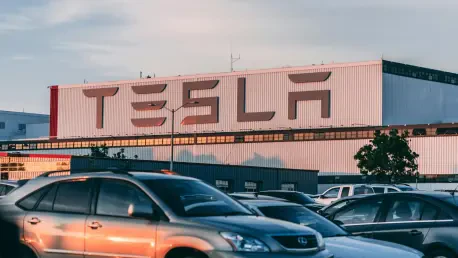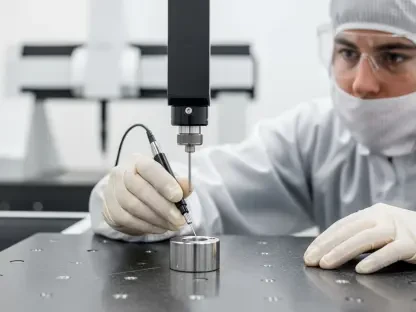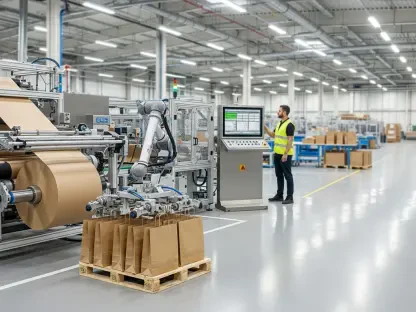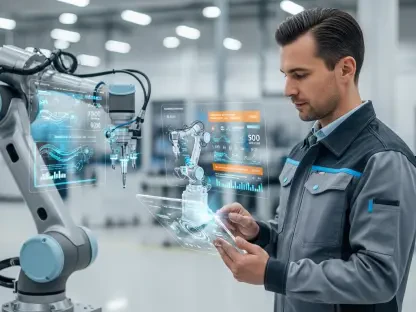In the fast-paced realm of automotive engineering, a quiet revolution is underway as industry leaders strive to build vehicles that are not only faster and more efficient but also kinder to the planet. Tesla and Toyota, two titans of the sector, stand at the forefront of this transformation, harnessing the power of lightweight materials and groundbreaking technologies to redefine what’s possible on the road. Their efforts raise a compelling question: are they bending the fundamental rules of science, or simply perfecting the craft of innovation? This exploration delves into how these companies employ advanced materials like aluminum, high-strength steel, and carbon fiber-reinforced polymers to dramatically reduce vehicle weight, enhance fuel efficiency, and align with stringent global environmental mandates. The stakes couldn’t be higher, as cutting weight directly translates to better performance, lower emissions, and, for electric vehicles, extended driving range. Yet, the path is fraught with challenges, from balancing cost and durability to navigating the environmental impact of production. Through distinct strategies, both companies are charting new territory in pursuit of sustainability, offering a glimpse into the future of transportation where every gram matters.
The Drive for Lightweight Innovation
Why Weight Matters
The relentless pursuit of lighter vehicles is fueled by an urgent need to improve fuel economy, curb greenhouse gas emissions, and, in the case of electric vehicles, maximize driving range. Data from the U.S. Department of Energy highlights the profound impact of weight reduction, revealing that shaving just 10 percent off a vehicle’s mass can boost fuel efficiency by 6 to 8 percent. This statistic underscores why manufacturers are prioritizing lightweight technologies as a core component of their development strategies. For Tesla, this means pushing the boundaries of electric vehicle performance by offsetting heavy battery packs. For Toyota, it’s about achieving incremental gains across a diverse lineup of vehicles, including hybrids and traditional models. Beyond performance, weight reduction is also a critical lever for meeting strict regulatory frameworks like the U.S. Corporate Average Fuel Economy (CAFE) standards, which demand ever-improving efficiency. As consumer expectations for greener, more cost-effective transportation grow, the ability to deliver lighter vehicles becomes not just a competitive edge but a fundamental necessity in shaping the industry’s trajectory.
This focus on weight isn’t merely a technical exercise; it’s a response to broader societal and policy shifts toward sustainability. Governments worldwide are tightening emissions targets, compelling automakers to rethink every aspect of vehicle design. Lightweight materials offer a direct path to compliance, reducing the energy needed to move a car and, consequently, the carbon footprint it leaves behind. Tesla and Toyota are keenly aware of these pressures, integrating weight-saving solutions into their core philosophies. However, the benefits extend beyond the environmental realm—lighter vehicles often handle better, accelerate faster, and provide a more engaging driving experience. This dual appeal to eco-consciousness and performance positions lightweight technology as a transformative force, bridging the gap between regulatory demands and market desires. The challenge lies in executing these innovations at scale while maintaining affordability and safety, a balancing act that both companies are navigating with distinct approaches.
Material Trade-Offs
Choosing the right lightweight material is a complex puzzle, as each option brings a unique blend of benefits and drawbacks that shape design and manufacturing decisions. Aluminum, for instance, weighs about a third as much as traditional steel, making it a popular choice for slashing mass, but it demands specialized processing to ensure strength and durability over time. Tesla has leaned heavily into aluminum for its electric vehicle structures, capitalizing on its weight-saving potential to enhance range. However, the material’s higher cost and energy-intensive production process pose significant hurdles, requiring careful consideration of long-term benefits versus upfront expenses. Additionally, aluminum’s susceptibility to corrosion in certain conditions adds another layer of complexity, pushing engineers to develop protective coatings and treatments. These challenges highlight why the adoption of such materials is often a calculated risk, balancing immediate gains against potential pitfalls in performance and sustainability.
On the other hand, high-strength steel (HSS) and advanced high-strength steel (AHSS) offer impressive strength-to-weight ratios, making them a staple in Toyota’s approach to lightweighting across a broad range of vehicles. While these materials provide durability and are more cost-effective than alternatives like carbon fiber, they come with manufacturing challenges such as difficulties in forming and welding, which can complicate production lines. Carbon fiber reinforced polymers, though exceptional for their lightweight properties and strength, remain prohibitively expensive and tricky to repair, limiting their use to niche applications. Magnesium alloys, another contender, are even lighter than aluminum but suffer from corrosion issues and elevated costs, restricting widespread adoption. Both Tesla and Toyota must navigate these trade-offs, tailoring their material choices to align with their strategic goals—whether that’s radical weight reduction for EVs or incremental improvements across diverse models. This intricate balance of pros and cons underscores the broader industry struggle to innovate without compromising safety or economic viability.
Contrasting Approaches to Light Weighting
Tesla’s Bold Gigacasting Bet
Tesla has emerged as a trailblazer in the realm of lightweight technology by embracing gigacasting, a revolutionary manufacturing process that produces massive aluminum components for its vehicles. Seen in models like the Model Y, this technique consolidates numerous smaller parts into single, large-scale castings, slashing weight, reducing assembly complexity, and lowering production costs at high volumes. The result is a stiffer structure that enhances vehicle efficiency, directly addressing the challenge of heavy battery packs in electric vehicles by extending driving range. Gigacasting represents a significant departure from traditional assembly methods, showcasing a willingness to rethink automotive production from the ground up. However, the approach isn’t without its risks—ensuring crashworthiness and managing residual stresses during casting require rigorous testing and validation. Tesla’s commitment to this technology signals a bold bet on the future of electric mobility, prioritizing dramatic weight savings as a cornerstone of its competitive strategy.
Despite its potential, gigacasting demands substantial upfront investment in specialized equipment and infrastructure, posing a financial barrier that could deter smaller players in the industry. The process also introduces technical challenges, such as maintaining consistent material flow during casting and mitigating defects that could compromise structural integrity. Tesla must continuously refine these methods to meet stringent safety standards, particularly in crash scenarios where the performance of large cast components is critical. Moreover, the reliance on aluminum amplifies concerns about the environmental cost of production, as the energy-intensive nature of aluminum processing generates significant emissions. Yet, the long-term efficiency gains from lighter vehicles could offset these initial drawbacks, especially if paired with sustainable sourcing practices. Tesla’s gigacasting strategy exemplifies a high-stakes, high-reward approach, pushing the boundaries of what’s possible while navigating a landscape of uncertainty and innovation.
Toyota’s Steady and Sustainable Path
Toyota takes a markedly different tack in its pursuit of lightweight vehicles, opting for a pragmatic, incremental strategy that emphasizes high-strength steel and meticulous design optimization across its expansive portfolio. This approach allows the company to achieve meaningful weight reductions without the disruptive overhauls seen in more radical methods, ensuring compatibility with existing production systems. By focusing on high-strength steel, Toyota balances cost and performance, delivering efficiency gains in both traditional internal combustion engine vehicles and its growing range of hybrids and EVs. Beyond materials, the company integrates sustainability into its broader mission, as evidenced by a reported 14 percent reduction in Scope 1 and 2 greenhouse gas emissions over the past few years. This measured path reflects a commitment to reliability and broad applicability, prioritizing steady progress over flashy breakthroughs while still addressing the pressing need for greener transportation solutions.
Sustainability remains a guiding principle in Toyota’s lightweight efforts, with a strong emphasis on circular economy practices such as material recycling and waste reduction. Unlike approaches that hinge on a single transformative technology, Toyota’s strategy spreads weight-saving innovations across its lineup, ensuring that even small improvements add up to significant environmental benefits over time. However, challenges persist, particularly in scaling the use of alternative materials like aluminum without increasing costs or compromising safety. The complexity of maintaining quality across diverse vehicle models—from compact sedans to heavy-duty trucks—adds another layer of difficulty, requiring precise engineering and robust supply chains. Toyota’s focus on gradual integration and environmental responsibility offers a contrast to more aggressive tactics, demonstrating that impactful change can also emerge from consistency and long-term vision, especially in an industry where reliability is paramount.
Industry Trends and Future Horizons
Multi-Material Designs Taking Over
The automotive sector is undergoing a paradigm shift toward multi-material designs, where a strategic blend of steel, aluminum, composites, and alloys optimizes both performance and cost. This trend allows manufacturers to capitalize on the unique strengths of each material—such as the durability of high-strength steel and the weight savings of aluminum—while mitigating individual weaknesses through thoughtful engineering. Tesla employs this approach in its electric vehicle platforms, combining aluminum castings with other materials for structural efficiency, whereas Toyota applies it across a wider array of models to achieve incremental gains. Advanced tools like computational modeling and topology optimization play a pivotal role, enabling precise reductions in material usage without sacrificing safety or integrity. As this practice gains traction, it signals a future where vehicles are not defined by a single material but by a harmonious integration of many, tailored to specific functions within the car’s architecture.
This move toward hybrid material systems also reflects the industry’s response to evolving consumer and regulatory demands for efficiency and sustainability, aiming to meet modern expectations. By leveraging digital simulations, automakers can experiment with configurations that minimize weight in critical areas like the chassis or body shell while maintaining robustness where it matters most. However, adopting multi-material designs isn’t without obstacles—joining dissimilar materials often requires advanced techniques like adhesive bonding or hybrid welding, which can complicate manufacturing and raise costs. Supply chain coordination becomes more intricate as well, with the need to source diverse raw materials reliably. Despite these hurdles, the shift to multi-material frameworks is poised to redefine vehicle construction, offering a versatile solution that balances the competing priorities of performance, affordability, and environmental impact in an increasingly competitive market.
Electrification’s Weighty Challenge
As electric vehicles become a dominant force in the automotive landscape, the importance of lightweight materials intensifies, driven by the need to counteract the substantial mass of battery packs and improve overall efficiency. Every additional pound in an EV directly impacts driving range, a key concern for consumers hesitant about range anxiety. Tesla tackles this head-on with aggressive weight reduction through aluminum gigacasting, aiming to squeeze out maximum efficiency from its electric lineup. Toyota, meanwhile, weaves lightweight strategies into its electrification plans, applying them across hybrids and full EVs to ensure practicality without compromising on performance. Government research supports this focus, noting that lighter vehicles can either extend range or allow for smaller, less expensive battery systems while delivering comparable results. This dynamic positions lightweight technology as a linchpin in making electric mobility accessible and appealing to a broader audience.
Beyond range, the push for lighter EVs ties into broader goals of energy efficiency and sustainability, aligning with global efforts to reduce transportation’s carbon footprint. Heavy batteries not only affect performance but also increase wear on components like tires and suspension, necessitating smarter design choices to distribute weight effectively. The challenge lies in integrating lightweight materials without inflating production costs or undermining safety, especially given the unique crash dynamics of EVs due to battery placement. Innovations in material science, such as lightweight battery enclosures or composite structural elements, are emerging as potential solutions, though they require extensive testing and validation. Both Tesla and Toyota are pioneering efforts in this space, setting benchmarks for how weight reduction can transform electric vehicles into viable, mainstream options, even as the industry grapples with scaling these advancements to meet growing demand.
Manufacturing Evolution
The evolution of manufacturing processes is unlocking new possibilities for lightweight materials, with techniques like Tesla’s gigacasting leading the charge in redefining how vehicles are assembled. By producing large, single-piece aluminum components, this method reduces the number of parts and welds, cutting both weight and production complexity. Toyota, on the other hand, focuses on precision with high-strength steel, refining traditional processes to integrate lighter materials seamlessly into existing systems. Across the board, advanced joining methods—such as adhesive bonding, rivets, and hybrid welding—are becoming essential to combine dissimilar materials without compromising strength. Digital simulations further enhance these efforts, allowing manufacturers to predict performance and optimize designs before physical prototypes are built. These advancements signal a shift toward smarter, more efficient production, though they come with steep learning curves and significant capital requirements.
However, the transition to these cutting-edge manufacturing approaches isn’t seamless, as it requires substantial investment in retooling factories and retraining workforces, which can be a significant hurdle for many companies. Supply chain stability also emerges as a critical concern, with the need for consistent access to specialized materials and equipment often straining logistics. Smaller manufacturers, in particular, may struggle to adopt such innovations due to financial constraints, potentially widening the gap between industry leaders and emerging players. Environmental considerations add another layer of complexity, as energy-intensive processes like casting can offset some of the sustainability gains from lighter vehicles if not managed responsibly. Despite these challenges, the push toward manufacturing evolution remains a driving force, with Tesla and Toyota setting distinct yet influential examples of how to harness technology to build the cars of tomorrow, prioritizing efficiency at every stage of production.
Environmental Costs and Solutions
While lightweight materials promise significant fuel savings over a vehicle’s lifespan, their production often carries a substantial environmental burden that cannot be ignored, making it a critical issue for the automotive industry to address. Aluminum, a favored choice for weight reduction, requires vast amounts of energy to produce, resulting in higher embodied emissions compared to traditional steel. Carbon fiber and magnesium alloys, though effective in cutting mass, also come with hefty ecological footprints due to complex manufacturing processes. Tesla mitigates this by focusing on long-term efficiency gains through extended EV range, betting that reduced operational emissions will outweigh initial production costs. Toyota takes a different route, emphasizing recycling initiatives and circular economy principles to minimize waste and reuse materials wherever possible. Addressing these environmental trade-offs is becoming a central focus for the industry, as sustainability extends beyond the vehicle’s use phase to encompass its entire lifecycle.
Finding solutions to these environmental challenges requires a multi-faceted approach, blending innovation with accountability, to ensure a sustainable future. Advances in recycling technologies are critical, allowing materials like aluminum and steel to be repurposed with lower energy input than primary production. Sourcing raw materials more sustainably—through renewable energy-powered facilities, for instance—offers another avenue to reduce impact. Both companies face pressure to align their lightweight strategies with broader climate goals, ensuring that the benefits of reduced vehicle weight aren’t undermined by upstream emissions. Regulatory frameworks are also evolving to incentivize greener production methods, pushing manufacturers to invest in cleaner technologies. As these efforts mature, the balance between environmental cost and benefit will likely tip in favor of sustainability, provided the industry continues to prioritize holistic solutions over short-term gains.
What’s Next for Lightweight Tech
Looking to the horizon, the lightweight materials market is on track for remarkable expansion, with projections estimating a climb from $143 billion in the previous year to over $203 billion by 2031, reflecting a steady compound annual growth rate. This growth signals a future rich with innovation, where hybrid material systems will likely become the norm, integrating diverse components to optimize every aspect of vehicle design. Expect deeper applications in electric vehicle components beyond the body shell, such as battery enclosures and suspension parts, to further enhance efficiency. Tesla’s structural consolidation through gigacasting may inspire similar breakthroughs among competitors, though adoption rates will vary based on cost and scalability constraints. Meanwhile, digital design tools like simulation and optimization software are set to play an even larger role, enabling precise engineering with minimal material waste. The trajectory is clear—lighter vehicles are not a passing trend but a permanent fixture in the quest for sustainable mobility.
Yet, significant challenges remain on this path forward, particularly in making advanced lightweight technologies accessible to a wider range of manufacturers without prohibitive costs. Safety will continue to be a paramount concern, as integrating new materials and methods must never compromise crashworthiness or durability, requiring ongoing research and rigorous testing. Environmental considerations will also shape future developments, with a growing emphasis on reducing the carbon footprint of production processes through renewable energy and improved recycling systems. Toyota’s incremental approach and Tesla’s disruptive tactics both offer valuable lessons, suggesting that a blend of bold innovation and practical scaling could define the next wave of progress. As the industry evolves, the focus will likely shift toward creating a cohesive ecosystem where lightweight technology, electrification, and sustainability converge, paving the way for vehicles that are as efficient as they are responsible.









